5 ways garden designer Tom Stuart Smith transformed this Georgian cottage garden
Multiple RHS Gold Medal-winning landscape designer worked closely with the owner of this Georgian farmhouse garden


Pierre, the owner of this Grade II Georgian red-brick farmhouse was looking for a modest ‘Beatrix-Potter cottage with a view’ .
He learned about Hatch House, from a friend. Which had outbuildings and 10 acres in the next door village, which was about to come on the market: not exactly a cottage but in the quiet, vernacular style he had been looking for. Having sent round his architect to have a look (he approved), he bought it, sight unseen, before the For Sale sign had even gone up.
It had wonderful, far-reaching views of the nearby downland but was not without its problems. The first thing you could see when you went up the drive was that it was a bridleway, which was crossing the whole plot. It was about five metres from the terrace and very intrusive.
Also, marring those wonderful views was a large electricity pole, 50 metres from the house: it was going to be an eyesore forever. It took a couple of years but he managed to get the path diverted to somewhere more discreet, the pole removed and the concomitant wiring buried out of view.
That there was little existing garden to speak of made this all relatively painless. Meanwhile, Pierre brought in Tom Stuart-Smith, the multiple RHS Gold Medal-winning landscape designer with whom he had worked closely on several other of his properties.
It was important to both that the place should keep its ‘integrity’, nothing inappropriately smart or flash – this is a farmhouse after all, not a mansion - and with a garden that would look its best from the end of September through to February, which is when the family and their friends would use it most.
1. Choosing plants for later seasons
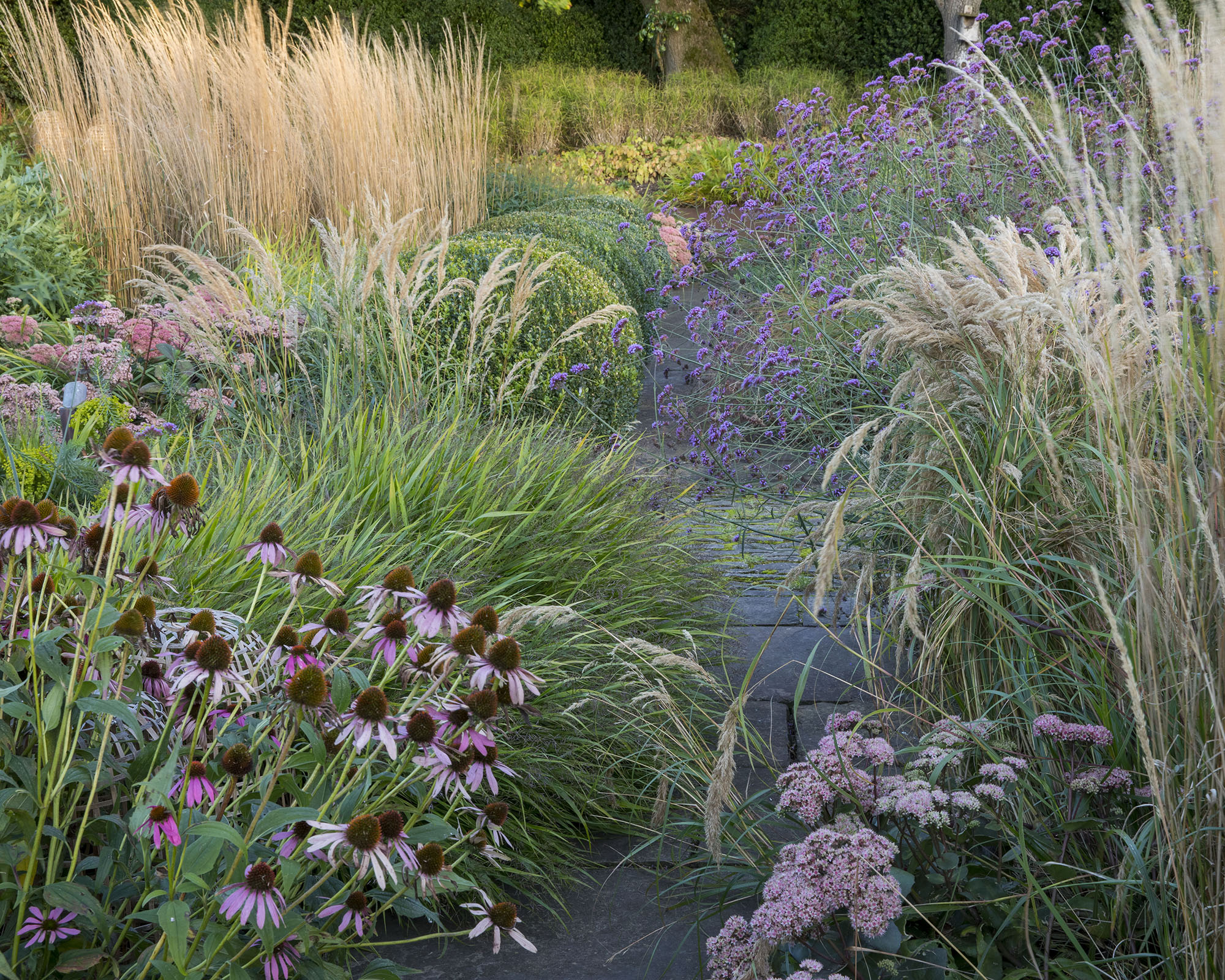
The outbuildings to the north would become guest accommodation and a dining room for shooting parties, so Pierre and Tom decided that is where they would concentrate on creating the most ‘gardeny’ bit on the property. Here, ornamental grasses and late perennials planted in a regular grid of beds reminiscent of a kitchen garden enclosed by cloud-pruned buxus, which would hold their structure after their flowering season had passed, right the way through the frosts and into early next season.
‘I come from Belgium,’ says Pierre. ‘We cut things back way earlier there. In England you delay things: dead plants can be beautiful.’ The likes of hylotelephium (sedums), Verbena bonariensis, echinaceas and the buff seed heads on tall stems of Calamagrostis ‘Karl Foerster’ hold their own until at last the gardener can have his way and chop them down.
2. Ensuring interest earlier in the year
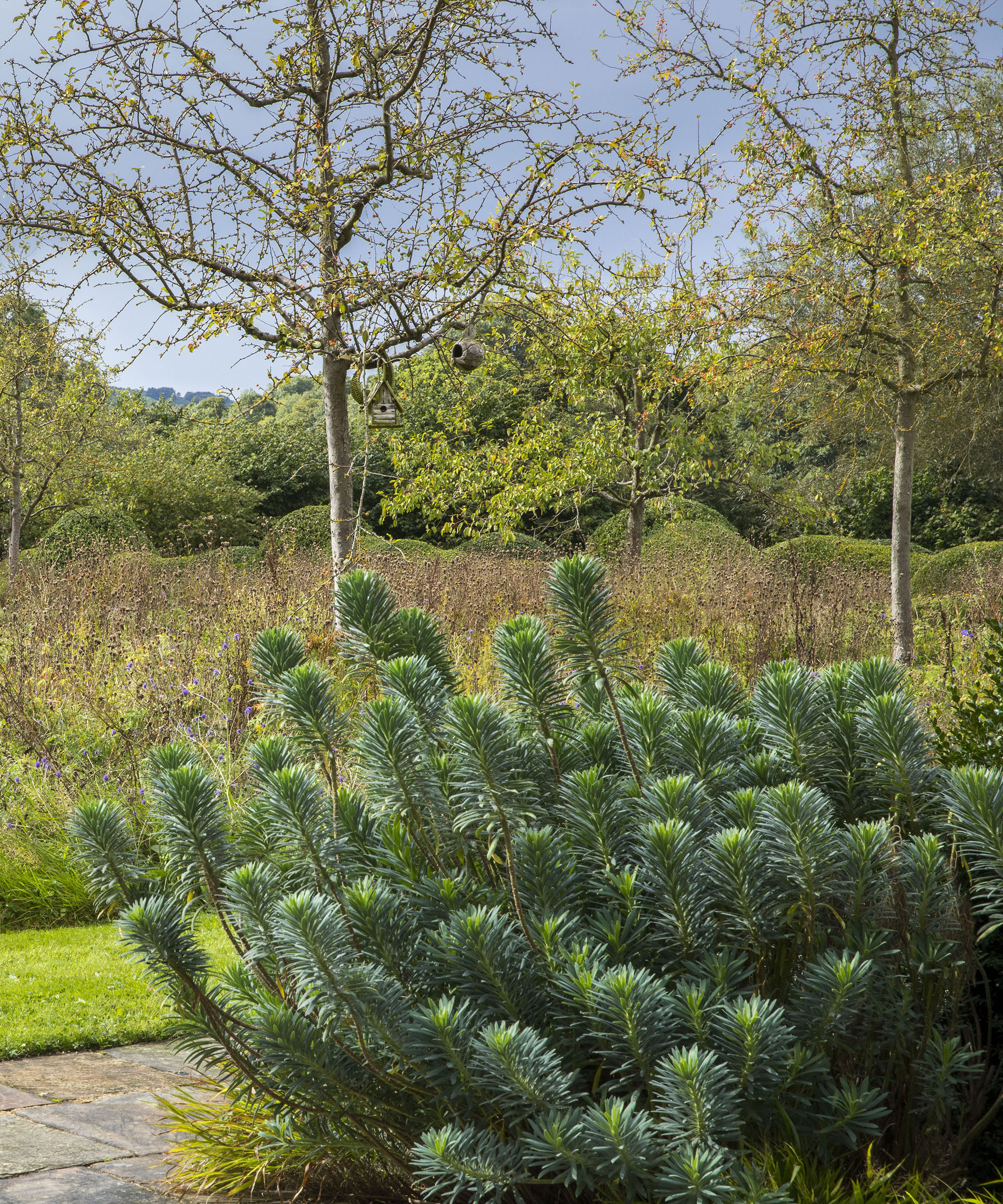
Although designed primarily for fall and winter interest, there is plenty in the garden that looks wonderful earlier in the year – among them the zinging greens of euphorbias and young grasses; purple heads of Allium sphaerocephalon and roses – bushes and bushes of them – climbing up the walls of the house and billowing in the borders.
3. Adding ornamental detail with Corten steel
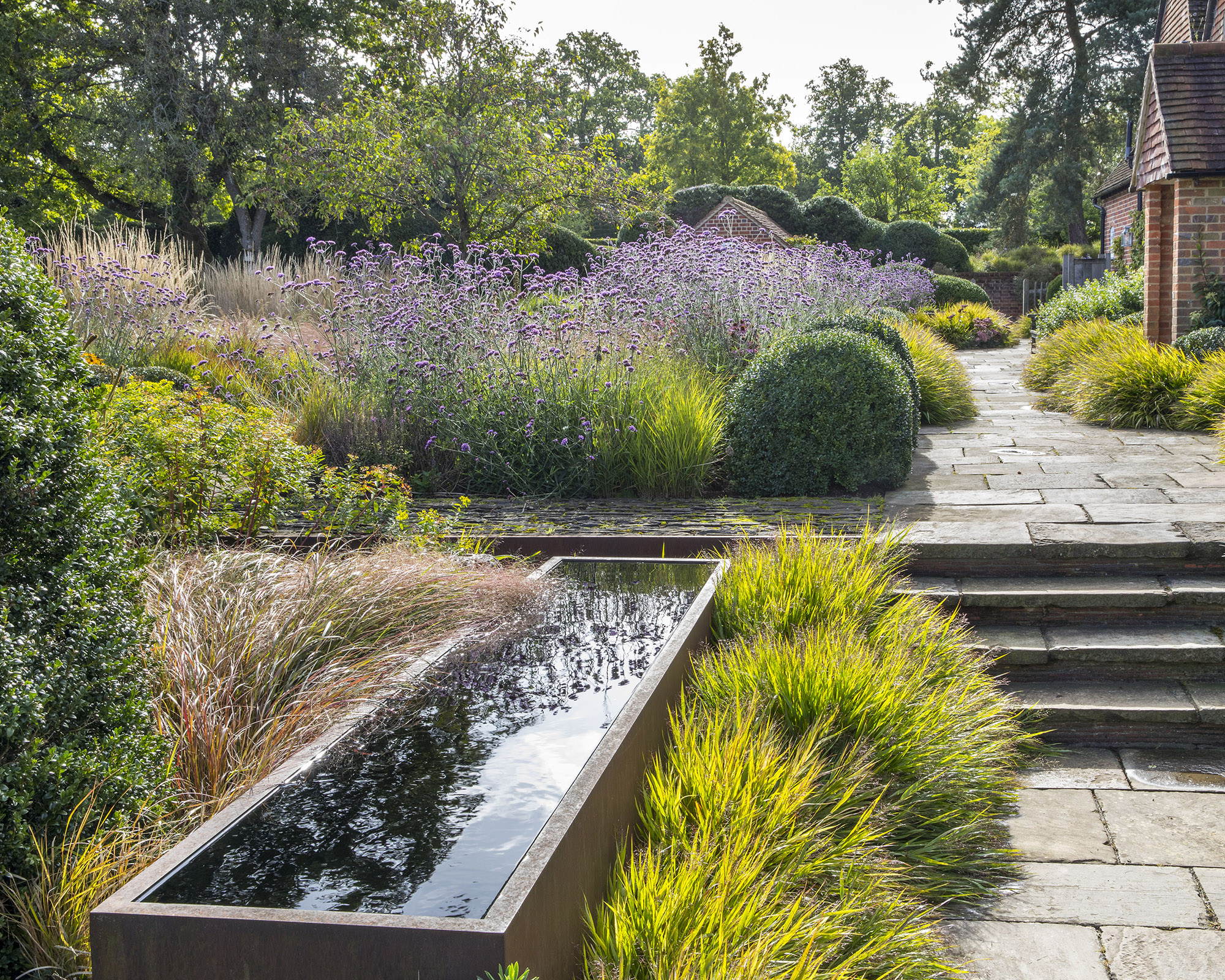
Pierre is not a fan of contemporary sculpture in his cottage gardens but he did allow Tom to introduce a little ornament in the form of long Corten steel water tanks, which reflect the branches of the crab apples planted beside them, as well as the scudding clouds above.
Their form is a nod to the cattle troughs that would have been around the place when it was a working farm, and the rusty steel picks up on the red brick of the house and its clay roof tiles. Gently uplit from below at night, they serve as a guide as one walks between the house and barns.
4. Using clever techniques to 'borrow landscapes'
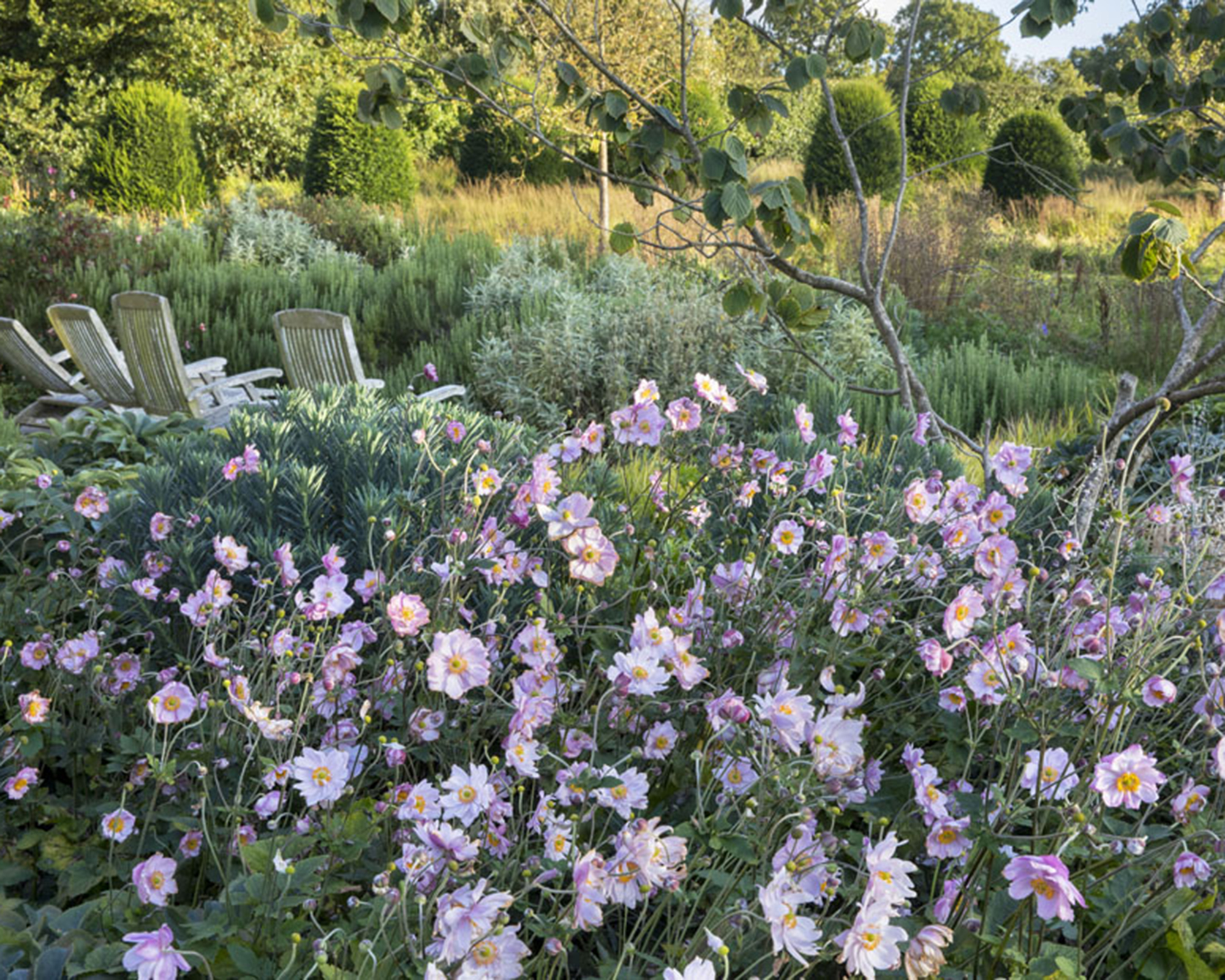
To the south of the house is where the long views are, with only another farmhouse in the distance showing human occupation. Here the planting is laid out in a similar grid pattern to the north but with mown grass paths between the beds, rather than the granite stone strips of the former area, and the planting consisting largely of grasses and meadow flowers.
Enclosed again by high hedges, a hole has been cut in the far hedges, with a wooden gate, so the meadowland and distant landscape can be admired from the terrace, a ‘borrowed’ landscape that seems a continuation of the garden, the two subtly blending together. It is a technique itself ‘borrowed’ from the Japanese, embracing what is around a garden, rather than creating a little microcosm tucked away from the world.
5. Screening the tennis court with stunning hedging
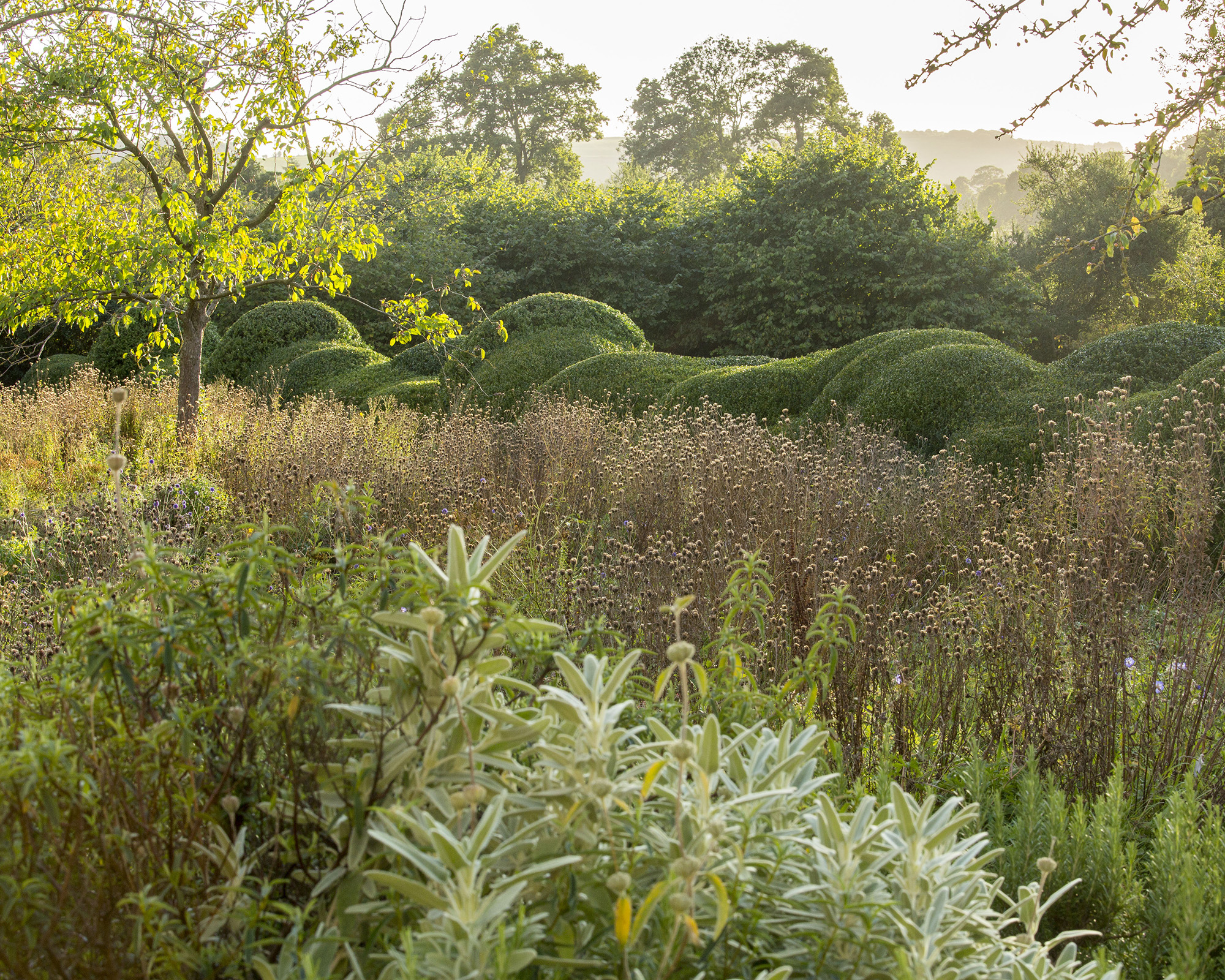
Some things are best tucked away though, and those looking for the tennis court will find it not impeding on the rest of the garden but to the side of the grassy area, cut into the slopes of the garden and tucked out of sight behind a cleverly staggered hedge of yew and box. No ugly chain fencing here but discreet and rustic cleft pale railings, made in oak by Winterborne Zelston Fencing and slightly higher at each end of the court to catch wild balls.
Words / Caroline Donald
Sign up to the Homes & Gardens newsletter
Design expertise in your inbox – from inspiring decorating ideas and beautiful celebrity homes to practical gardening advice and shopping round-ups.

Teresa was part of a team that launched Easy Gardens magazine two years ago and edited it for some time. Teresa has been a Gardens Editor at Homes & Gardens, Country Homes & Interiors and Living Etc magazine since 2020 and has developed close working relationships with top garden designers, and has been exposed to an array of rich garden content and expertise.
-
 5 plants that are illegal to grow in California – how to control these invasive species in your yard, plus the native alternatives to use instead
5 plants that are illegal to grow in California – how to control these invasive species in your yard, plus the native alternatives to use insteadThese troublesome, invasive species will outcompete native plants and you could face a fine for growing them
By Thomas Rutter
-
 An architectural birdhouse is the most charming backyard trend I've ever seen – and there are lots on sale for Way Day
An architectural birdhouse is the most charming backyard trend I've ever seen – and there are lots on sale for Way DayWill you treat your garden birds to a Victorian manor, or perhaps a Cape Cod cottage?
By Tenielle Jordison